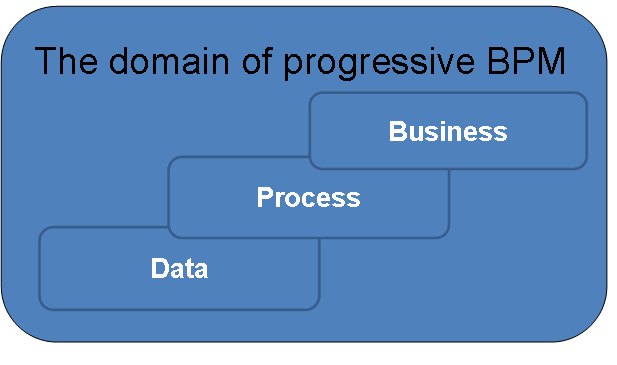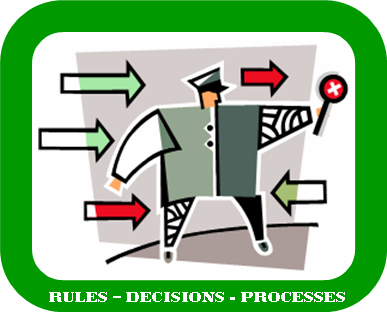Business process management (BPM) has not yet matured enough to be promoting best-practices or featuring large clear success stories. Still, BPM holds huge promise. It shows no signs of going away and process pundits are giving it increasingly serious consideration. In general, the status is hopeful or that it might be starting to stabilize and mature. Companies with significant process challenges should stay closely tuned.
BPM has a lingering identity issue. Most business performance topics fall predominantly into one of the elements of the people-process-technology frame of reference, but BPM is all over. BPM has process in its name, but more than most topics, it resists clean classification. Maybe that’s the nature of BPM as a relatively new topic, and this contributes to the identity issue because it sometimes tends to look like all things to all people.
Learnings:
- BPM does not absolve a business from needing to have a solid process discipline. The fundamental questions of process ownership and challenges of crossing organizational boundaries become more visible and still have to be addressed. Without enlightened leadership, BPM (or really any change initiative) might not even start, or the results will be constrained. This is tied to the concerns for BPM’s cultural fit, and how an adoption program should be approached. Certainly there are many implications behind process ownership, but the more telling or insightful question might be who owns the BPM adoption program.
- BPM requires extraordinarily robust communications to manage all the process content. Here implied is one of the reasons business people don’t really want to manage capture of the processes. But neither can it be left solely to IT following the BPMN software-definition language. (BPMN is rigorous but too technical for most). Communications is a prime example of where business-IT fusion is needed to get down to the reality of work flow between desks and machines, handling exceptions, and gaining team understanding and agreement. Delivering on communications is necessary and good, but beware the tendency some have shown to think of BPM as “just a documentation tool”.
- BPM needs to be interrelated with businesses’ core improvement/change initiatives. In the end, just as it is with fundamental process discipline, it comes down to quality-oriented fundamentals and practices to address variability and handle never ending change. Here it is suggested to promote pro-activity and flexibility with eyes open because BPM will not be neutral with regard to lean, six sigma/DFSS, agile software development practices, the business model at large, the basic quest for innovation, promotion of desired cultural characteristics, performance metrics, other reference models, etc.
- BPM requires dedication of skilled people that can represent and facilitate the business and strategy. While everybody needs to know how they support and tie to the strategy, this takes on important deeper dimension for those who are core to BPM. Certainly these are people that can be instrumental and leading and entrusted with regard to points 1, 2 and 3 above, while simultaneously having solid appreciation for the IT implications.
A holistic view of BPM suggests it should be a clear reliable path for keeping strategy aligned with the design and support structure of the business. However, BPM now needs to get beyond the old impasse, where C-level executives aren’t seeing the level and surety of results to invest, while results aren’t being achieved because the investment isn’t there. To achieve the potential, there will need to be better ownership of BPM by the people running the business. And this probably won’t happen without acknowledgement that things haven’t worked or need to work substantially better.
While there is some uber logic to the ordering of these learnings/observations/opinions, it seems most practical to start with assuring the right people. In other words, points 1, 2, and 3 will require a core set of people to get meaningfully started. If you are committed and starting or if you simply want to do the diligence, you can hardly go wrong by retaining the right BPM-skilled/aware people since they will always be a tremendous resource.



